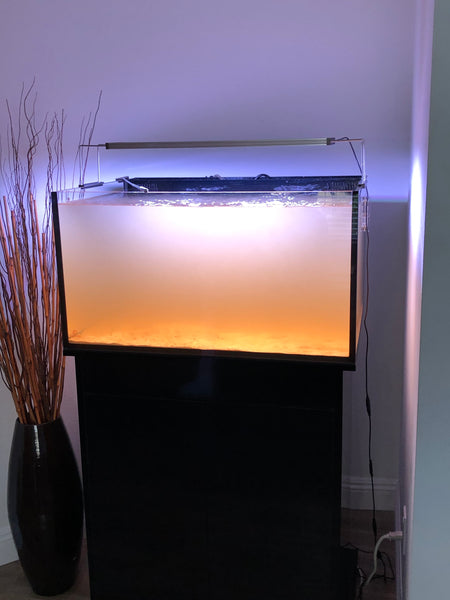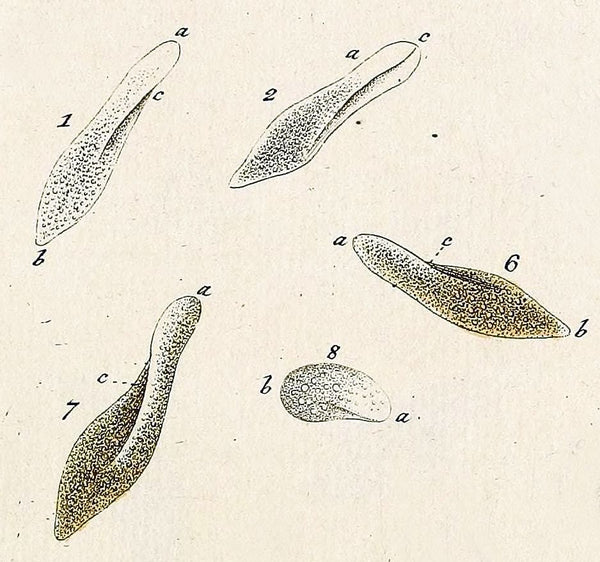- Continue Shopping
- Your Cart is Empty
A "clean start?"
When you think about it, setting the stage for life in our aquariums is the SINGLE most important thing that we do. If we utilize a different mind set, and deploy a lot more patience for the process, we start to look at it a bit differently.
I mean, sure, you want to rinse sand as clean as possible. You want make sure that you have a piece of wood that's been soaked for a while, and..
Wait, DO you? Why is that?

I mean, sure, if you don't rinse your sand carefully, you'll get some cloudy water-possibly for weeks...no argument there. I mean, it eventually clears, but it can be pretty annoying, huh? Is it "harmful", though? I mean, your likely not adding fishes from day one, so why is it a problem. And what exactly is the "problem" that silty water causes for your fishes?

And if you don't clean your driftwood carefully, you're liable to have some soil or other "dirt" get into your system, and perhaps more tannins being released into the water column, which leads to...well, what does it lead to?
I mean, an aquarium is not a "sterile" habitat.
The natural aquatic habits, although comprised of many millions times the volumes of water that we have in our tanks- are typically not "pristine", either- right? I mean, soils from terrestrial geologic activity carry with them decomposing matter, leaves, etc, all of which impact the chemistry, oxygen-carrying capacity, biological activity, and of course, the visual appearance of the water.

And that's kind of what our whole botanical-method aquarium adventure is all about- utilizing the "imperfect" nature of the materials at our disposal, and fostering and appreciating the natural interactions which take place in aquatic habitats. Understanding that descriptors such as "crystal clear" and "pristine" only apply to some aquatic habitats, and that there is real beauty in all types of aquatic habitats.

Indeed, the real "magic", in many instances, occurs in the more murky, turbid, not-so-crystal-clear waters of the world. And if we understand and accept this, we're likely to start our aquariums with a bit less concern over absolute "sterile perfection."
Rather, I feel that we should embrace the mindset that every leaf, every piece of wood, every bit of substrate in our aquariums is actually a sort of "catalyst" for sparking biodiversity and yes- a new view of aesthetics in our aquariums. The basis for the developing ecology within your aquarium.

Now, I'm not saying that we should NOT ever rinse sand, or soak wood before adding it to our tanks. I'm not suggesting that we throw caution to the wind and just toss stuff from any old source into our tanks without inspection or at least a rinse. Heavens, no.
What I AM suggesting is that we don't "lose our shit" if our water gets a little bit turbid or there is a bit of botanical detritus accumulating on the substrate, especially when the tank is brand new. And guess what? We don't have to start a tank with brand new, right-from-the-bag substrate.
Of course not.

We can utilize some old substrate from another established, healthy tank (we have done this as a hobby for generations, for the purpose of "jump starting bacterial growth) for the purpose of providing a different aesthetic as well. It's a time-honored, proven technique.
And, you can/should take it further: Use that slightly algae-covered piece of driftwood or rock in your brand new tank. Add those partial-decomposed leaves or fungal-encrusted oak twigs from that established tank into your new one.This gives a more "broken-in look", and helps foster a habitat more favorable to the growth of the microorganisms, fungi, and other creatures which comprise an important part of our closed aquarium ecosystems.
In fact, in a botanical-style aquarium, facilitating the rapid growth of such biotia is foundational. The whole idea is to allow life to establish itself and proliferate at so many levels- so adding materials to our tanks which facilitate this process- which contain the "ingredients" to jump-start your ecology- just makes a lot of sense, right?

And, hey- It's okay for your tank to look a bit "established" right from the start.
In fact, I think most of us actually would prefer that! It's okay to embrace this idea of not overly preparing and cleaning well-sourced materials and adding them to your aquarium. From a functional AND aesthetic standpoint. Employ good husbandry, careful observation, and common sense when starting and managing your new aquarium.
Don't add those leaves that you collected from the gutter in front of the automobile paint shop, that ditch behind the carwash, or that new construction site...If you're going to "minimally prepare" materials for aquarium use, make sure that they are from sources free of pollution...
And don't fight the appearance of your tank in these early phases. You're building an ecosystem; attempting to follow Nature's cues. Terrestrial materials impart all sorts of organic and inorganic substances to the water. These, in turn, help foster life.
In the flooded forests, ponds, and streams of the world, materials which fall into the water break down, and they alter it biologically, chemically, and even physically.

It's something that we as aquarists have to accept in our tanks, which is not always easy for us, right?Decomposition, detritus, biofilms- all that stuff looks, well- different than what we've been told over the years is "proper" for an aquarium. And, it's as much a perception issue as it is a husbandry one. I mean, we're talking about materials from decomposing botanicals and wood, as opposed to uneaten food, fish waste, and such.
What's really cool about this is that, in our community, we aren't seeing hobbyists freak out over some of the aesthetics previously associated with "dirty!"
It's fundamental.

And it's not like we've told ourselves that it's acceptable to not change water, siphon detritus, overstock, or overfeed. Nope. We can still perform excellent regular husbandry routines on botanical-style aquariums. We still monitor water chemistry. We're still diligent aquarists. And we still might have so-called "dirty" looking water!
And, that's kind of what Nature wants, right?
The important thing for us to do as hobbyists is to understand that, just because the tank looks like it might fit our definition of "dirty"- it often times isn't. It's a mental shift...again.
The desire to have a "super-clean" (whatever THAT actually means...) tank is, I think, rooted primarily in aesthetics, and is a decidedly impractical goal for many hobbyists. When we strive to create a spotless tank, we're essentially fighting against what Nature does...and what the natural aquatic ecosystem requires.
When you're siphoning out every speck of detritus, or scrubbing away all of the fungal growth on your leaves, you're essentially decimating a significant population of the life forms which make up the aquariums ecosystem, as well as their food sources. It's literally as simple as that.
If we make the assumption that, just because something looks contrary to what our hobby aesthetic "norms" say is "attractive" or "safe" or whatever, we miss out on the opportunity to create an ecologically functional aquarium, replete with a diversity of life forms.
So, in summary- keep your aquarium "clean"- meaning, keep the water quality high, and the environmental conditions stable. However, don't obsess over "sterility." Look to the overall health of your animals and their aquarium as your cue.
Stay observant. Stay diligent. Stay open-minded. Stay curious...
And Stay Wet.
Scott Fellman
Tannin Aquatics
2 Responses
Scott Fellman
I agree with you! I think we value “pristine” and “Sterile” and have somehow associated those with “natural.” And, as we all know, Nature is typically anything but sterile and pristine, and we should strive to emulate TAHT in our tanks. . We have been pushing this philosophy for years on social media, and I agree- it’s slowly starting to trickle into the hobby consciousness…
Scott
BKryda
I definitely don’t have a problem with leaving some mulm in my tanks; I often see cacatuoides getting really into the mulm piles. I think a lot of people feel they need to have a pristine tank because they see horror stories on the internet about cloudy tanks, mulm, etc. It does not help that all the social media sharing of tanks out there features planted tanks that look like they were hand-tended by a monk who spends a lot of time doing nothing other than meditatively clipping foliage. I definitely saw my fair share of more “neglected” tanks back before everyone had a phone camera. That said, if we look at gardens and yards, people have always had the opinion that well-manicured is best, despite the fact that this might do nothing for the local fauna. My front yard is manicured to beat the band. My back yard, on the other hand, is a sanctuary for both self and nature. I have lots of native plantings (biotope garden?) and tend to leave things to their own devices, minus a general shape of “beds” and pathways.
I would say the overwhelming mentality of pristine and proper seems to be holding strong, but I do find it interesting that the social media which helps enforce this also allows for some creeping in of diversity. Reddit, for example, has a blackwater aquarium subreddit that has been gaining in popularity.







Scott Fellman
Author